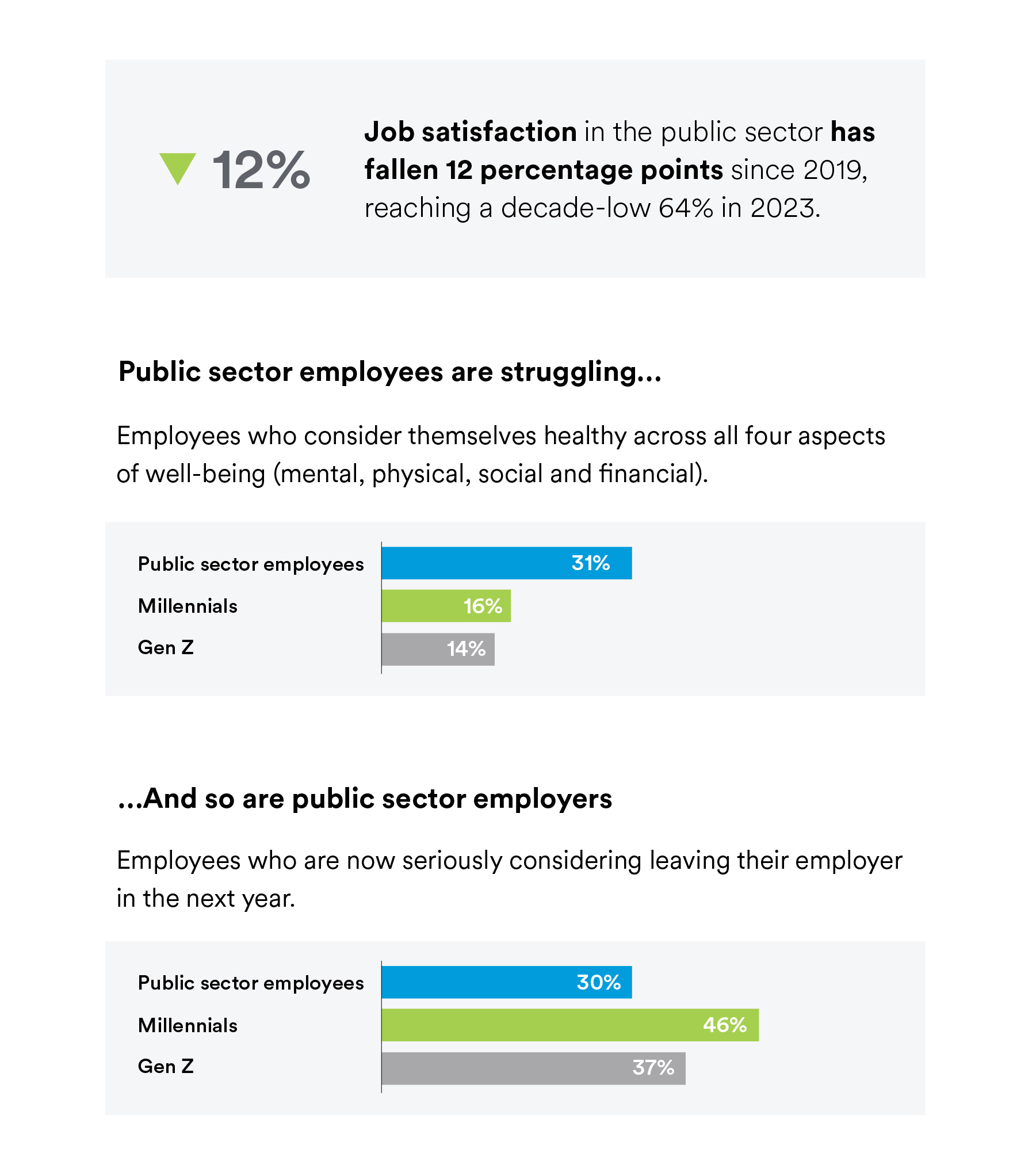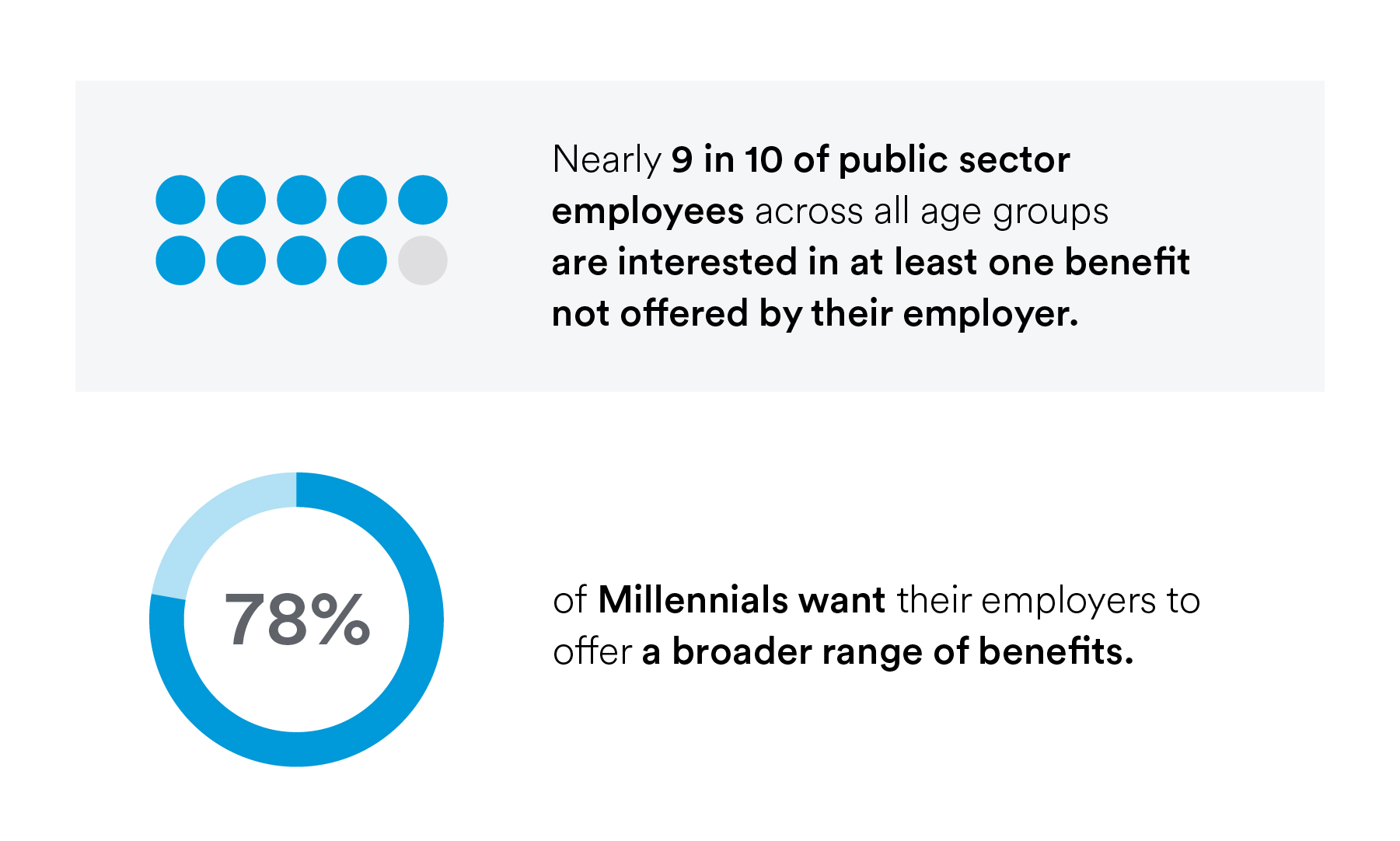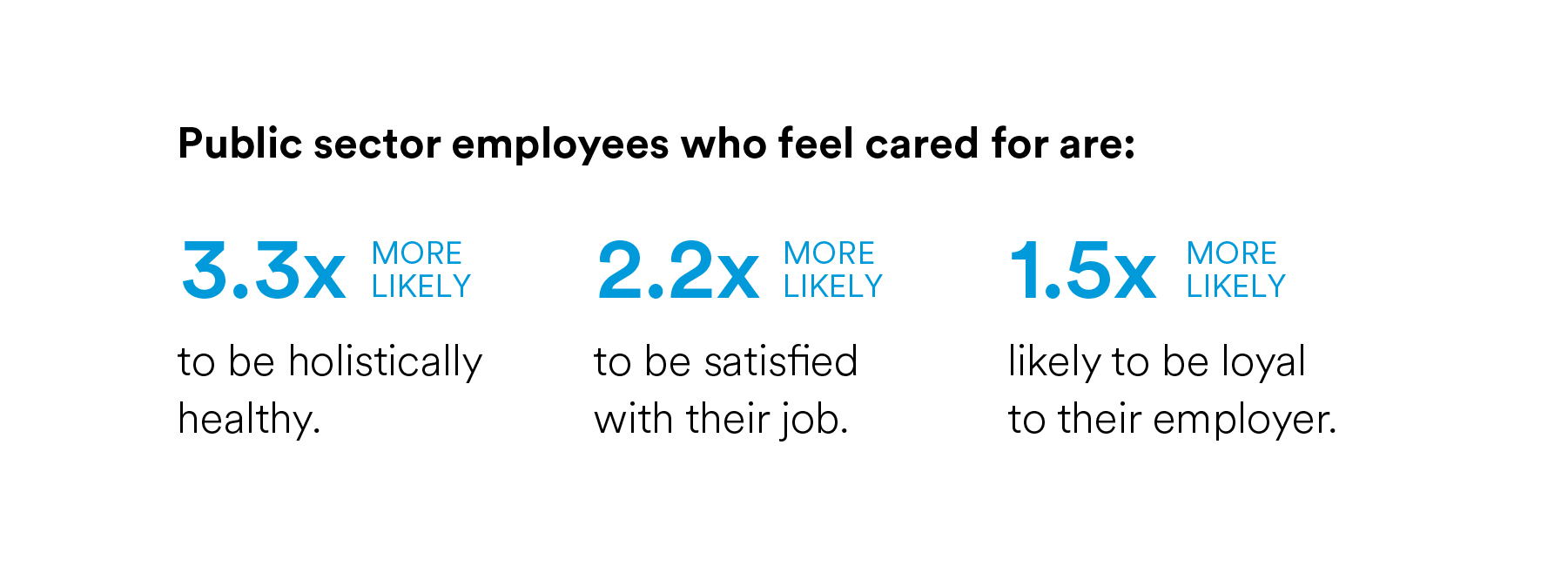Employee Benefit Trends
Employee care in the public sector: Strategies to boost satisfaction, engagement and
retention
Key takeaways
- The public sector faces a talent management crisis, with loyalty and satisfaction hitting decade-lows.
- Traditional drivers of retention, including purposeful work, have become less effective among younger public sector employees.
- Public sector employers can significantly boost satisfaction, loyalty and well-being by demonstrating employee care.
The past few years have seen dramatic shifts in employee-employer relations across the public sector — and in government offices, schools and post-secondary institutions across the country, employees and employers face a new set of pressures.
Public sector talent, still shaken from the disruption of the pandemic, find their financial health slipping in the wake of inflation and rising cost of living. And public sector employers, scrambling to meet the ever-shifting needs of their employees, now face the worst talent management crisis in years.
As costs of living continue to increase, public sector employees find their financial health in a tailspin. Overall financial well-being has fallen by one-third year over year. And nearly 7 in 10 public sector employees are concerned at their ability to pay down debt, up from just 41% in 2023.
These financial stressors are impacting workers’ perceptions of their employers, too: More than one-third of public sector employees who rate their financial health poorly say they’re not paid enough for the work they do.
Against this backdrop, the “old playbook” for talent management has become less effective
Public sector employers have traditionally relied on purposeful work and great benefits to attract and retain their talent. And, for the most part, Boomers and Gen X were willing to accept this tradeoff for slightly lower wages compared to the private sector.
But for young talent, squeezed with record-high student loans and rising costs of living, compensation has become more important than ever.
Younger public sector employees’ sense of purpose is falling, with less than half of Millennials now saying they feel a strong sense of purpose at work. Compensation and salary remain at the top of Millennials’ “must haves” when deciding to choose a new job or stay at their employer, and compensation is now considered more important to public sector employees than those outside the public sector.
Benefits satisfaction is on the decline, as well:
At the same time, less than one-third of public sector employees say they’re willing to bear more of the cost of their benefits in exchange for access to a broader range of benefits and programs. In short, those who need broader benefits the most are least likely to be able to afford them, placing new pressure on employers to both offer more benefits and cover their cost.
Meeting the needs of today’s public sector talent requires holistic employee care
A new generation of talent has brought with them new expectations, and organizations in the public sector must deploy new tactics to support their talent. Our research has identified a new opportunity to boost employee well-being, satisfaction, and loyalty: Demonstrating employee care.
Employee care refers to taking an active and genuine interest in employees’ well-being, both at work and outside of work. It encompasses multiple elements of the employee experience that work synergistically to strengthen the workplace culture and support each aspect of employees’ holistic health.
Placed in the larger context of care, traditional drivers of loyalty in the public sector — such as mission-driven work and excellent benefits — become much more effective for retaining talent. And employers that care for their talent across the employee experience reap significant awards:
However, public sector employers must overcome a “care gap” to retain their talent. Just 46% of public sector employees say they feel cared for, compared to 58% of employees across the total U.S. workforce — a figure that drops to 41% and 39% for Gen Z and Millennials, respectively.
Get the insights you need to close the public sector care gap
MetLife's 21st Annual Employee Benefit Trends Study delves into the unique pressures facing public sector employees today, and the opportunity for employers to improve organization-wide outcomes through care. You’ll learn how to meet the unique needs of public sector employees, the elements of employee care that matter most, and five strategies to deliver care across the employee experience.
Learn how to boost loyalty with employee care in our latest white paper.
GET IT HERE
Methodology
MetLife’s 21st Annual U.S. Employee Benefit Trends Study was conducted in November 2022 and consists of two distinct studies fielded by Rainmakers CSI – a global strategy, insight, and planning consultancy. The employer survey includes 2,840 interviews with benefits decision-makers and influencers at companies with at least two employees. The employee survey consists of 2,884 interviews with full-time employees, ages 21 and over, at companies with at least two employees. This article contains data collected for but not reported in the primary report.



